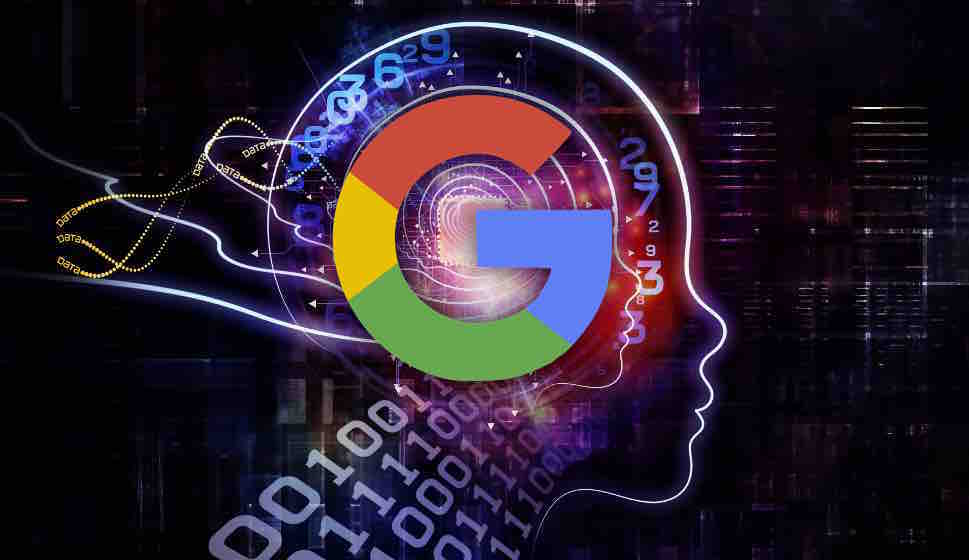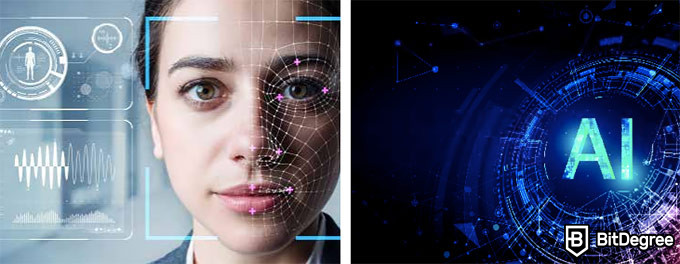
AI is not only about replacing humans. AI can also be used in other ways, such as to automate repetitive tasks at work. It can also be used to mitigate socioeconomic threats such as climate change. Let's take a closer look at some of these uses. Here are some examples of future developments in AI. They are all excellent, but AI has many potential areas for improvement. We can expect it to handle more complex tasks in the near term.
AI is moving in a positive direction
There have been many positive developments in artificial intelligence. It has led to an increase in efficiency, and has opened up new business possibilities. Google and Uber already use AI to improve the quality of their services. They employ sophisticated machine learning algorithms that dispatch drivers when they are needed. These companies are making huge strides forward. The AI technology will only continue to improve. In fact, it is already affecting our jobs and our lives.
In order to develop AI systems, it is necessary to balance ethical considerations and the benefits that innovation brings. Humans require assurance that the technology they use is safe and capable of delivering on its promises. This can be achieved by increasing data access and investing in AI workforce development. The regulation of AI to prevent bias and human oversight are other ways to address ethical issues. It's best to get involved with state officials and local officials in order to ensure that policies, practices and procedures are effective.

It can handle even more complicated tasks
Automation tools can be used to automate more complex activities, such as data processing. Combining these tools with artificial intelligence like machine learning can make tasks easier and more efficient. Robotic process automation, for example, automates rules-based data processor tasks. The use of AI tools to improve robotic process automation will allow for greater automation of many enterprise jobs. These systems are equipped with tactical bots which can communicate AI intelligence and can respond to any changes in the process.
AI has become an increasingly important part of our daily lives, but not everything is yet automated. Although AI systems are capable of performing basic tasks, complex tasks require human supervision. Alphabet Inc.'s DeepMind group described an experimental program that could outperform existing systems and cost less in the long-term. The artificial-intelligence system learned to navigate the London Underground, plan the shortest route to a destination, and figure out relationships between imaginary people. It also retained previous knowledge.
It automates repetitive tasks in an workplace setting
AI is being used to automate repetitive tasks within the office environment. Companies can save time, money, and increase productivity with this technology. This new way of automating offices can be scaled easily without compromising the quality or work. Furthermore, existing processes can easily be adapted without adding to their workload. AI-powered robots can be programmed to adapt for new tasks and environments.
AI-powered bots are also capable of performing mundane tasks like data entry. Since this task is typically carried out offshore, software can fill out the necessary fields on forms, thereby reducing the need for humans. Software can be programmed to do other tasks such as opening files and entering text. For example, in the New York Foundling, the new software enabled Hill to divert eight workers to other tasks, allowing her to focus on more strategic initiatives.

It can mitigate the socioeconomic risks posed by climate changes
AI can reduce costs and increase resilience to adverse climate change effects. It is especially helpful in low-income countries and developing nations, where adaptation to climate change is a pressing issue. These countries can use AI to assist with the planning and implementation of different adaptation measures. AI should be used worldwide and not only in low-income countries.
AI can be used to improve weather forecasts. AI can accurately predict storm track, hurricane magnitude, and the impact on drought and flooding. AI can be used to help farmers adjust their crops, methods of planting, and other factors. AI can also be used to mitigate the negative economic impact of climate changes and other socioeconomic threats. AI-powered AI systems can be used to help citizens live more comfortably and address these challenges.
FAQ
How does AI work?
An algorithm refers to a set of instructions that tells computers how to solve problems. An algorithm can be described as a sequence of steps. Each step has a condition that determines when it should execute. The computer executes each step sequentially until all conditions meet. This continues until the final result has been achieved.
Let's take, for example, the square root of 5. It is possible to write down every number between 1-10, calculate the square root for each and then take the average. This is not practical so you can instead write the following formula:
sqrt(x) x^0.5
This will tell you to square the input then divide it twice and multiply it by 2.
Computers follow the same principles. It takes the input and divides it. Then, it multiplies that number by 0.5. Finally, it outputs its answer.
Who created AI?
Alan Turing
Turing was created in 1912. His father was a clergyman, and his mother was a nurse. After being rejected by Cambridge University, he was a brilliant student of mathematics. However, he became depressed. He discovered chess and won several tournaments. After World War II, he worked in Britain's top-secret code-breaking center Bletchley Park where he cracked German codes.
He died on April 5, 1954.
John McCarthy
McCarthy was born in 1928. He studied maths at Princeton University before joining MIT. He created the LISP programming system. By 1957 he had created the foundations of modern AI.
He died in 2011.
AI is good or bad?
AI is seen both positively and negatively. On the positive side, it allows us to do things faster than ever before. Programming programs that can perform word processing and spreadsheets is now much easier than ever. Instead, our computers can do these tasks for us.
On the other side, many fear that AI could eventually replace humans. Many believe robots will one day surpass their creators in intelligence. This means that they may start taking over jobs.
How does AI work
An artificial neural networks is made up many simple processors called neuron. Each neuron receives inputs from other neurons and processes them using mathematical operations.
The layers of neurons are called layers. Each layer serves a different purpose. The first layer receives raw data like sounds, images, etc. It then passes this data on to the second layer, which continues processing them. Finally, the last layer generates an output.
Each neuron is assigned a weighting value. This value is multiplied each time new input arrives to add it to the weighted total of all previous values. If the result is more than zero, the neuron fires. It sends a signal to the next neuron telling them what to do.
This is repeated until the network ends. The final results will be obtained.
AI is useful for what?
Artificial intelligence (computer science) is the study of artificial behavior. It can be used in practical applications such a robotics, natural languages processing, game-playing, and other areas of computer science.
AI can also be called machine learning. This refers to the study of machines learning without having to program them.
AI is being used for two main reasons:
-
To make our lives easier.
-
To be better at what we do than we can do it ourselves.
A good example of this would be self-driving cars. We don't need to pay someone else to drive us around anymore because we can use AI to do it instead.
What are some examples AI apps?
AI can be used in many areas including finance, healthcare and manufacturing. Here are just some examples:
-
Finance – AI is already helping banks detect fraud. AI can scan millions of transactions every day and flag suspicious activity.
-
Healthcare – AI helps diagnose and spot cancerous cell, and recommends treatments.
-
Manufacturing - AI is used to increase efficiency in factories and reduce costs.
-
Transportation - Self-driving cars have been tested successfully in California. They are being tested in various parts of the world.
-
Utilities are using AI to monitor power consumption patterns.
-
Education - AI can be used to teach. Students can use their smartphones to interact with robots.
-
Government - AI can be used within government to track terrorists, criminals, or missing people.
-
Law Enforcement - AI is used in police investigations. Detectives can search databases containing thousands of hours of CCTV footage.
-
Defense - AI can both be used offensively and defensively. An AI system can be used to hack into enemy systems. For defense purposes, AI systems can be used for cyber security to protect military bases.
Statistics
- According to the company's website, more than 800 financial firms use AlphaSense, including some Fortune 500 corporations. (builtin.com)
- By using BrainBox AI, commercial buildings can reduce total energy costs by 25% and improves occupant comfort by 60%. (analyticsinsight.net)
- More than 70 percent of users claim they book trips on their phones, review travel tips, and research local landmarks and restaurants. (builtin.com)
- That's as many of us that have been in that AI space would say, it's about 70 or 80 percent of the work. (finra.org)
- Additionally, keeping in mind the current crisis, the AI is designed in a manner where it reduces the carbon footprint by 20-40%. (analyticsinsight.net)
External Links
How To
How to set Cortana up daily briefing
Cortana can be used as a digital assistant in Windows 10. It's designed to quickly help users find the answers they need, keep them informed and get work done on their devices.
A daily briefing can be set up to help you make your life easier and provide useful information at all times. The information should include news, weather forecasts, sports scores, stock prices, traffic reports, reminders, etc. You can choose the information you wish and how often.
Press Win + I to access Cortana. Click on "Settings" and select "Daily Briefings". Scroll down until you can see the option of enabling or disabling the daily briefing feature.
If you have the daily briefing feature enabled, here's how it can be customized:
1. Start the Cortana App.
2. Scroll down to the section "My Day".
3. Click the arrow near "Customize My Day."
4. Choose the type information you wish to receive each morning.
5. Change the frequency of the updates.
6. Add or remove items to your list.
7. Save the changes.
8. Close the app